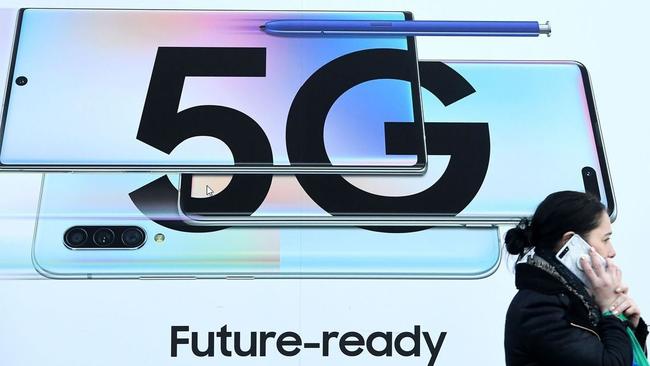5G likely to leave NBN in the shade

As the debate continues to unravel, it is important to understand the business benefits 5G brings and why many think it will give cable internet a run for its money.
The fourth industrial revolution (i4.0) has seen a fundamental shift in how we work and live, brought on by extraordinary technological advances.
IDC expects the current 33 zettabytes of worldwide data to compound to 175 zettabytes by 2025. In the past year alone the average NBN user increased their data consumption by 24.6 per cent, using 258 gigabytes of data in June last year. This surge is attributable largely to the boom of subscription video on demand and can be expected to grow exponentially with the anticipated market-wide growth due to the upcoming expansion or launches of Netflix, Amazon Prime, Disney+ and Foxtel Now in Australia.
With this much data, having the right network infrastructure will be critical to be able to manage, analyse and capitalise on its value. Furthermore, managing this overflow of data has never been more important to prevent data leaks, especially if that data contains critical business insights.
Fixed NBN speeds may not be enough to meet the needs of i4.0. As consumers increasingly rely on their mobile phones and demand faster internet speeds, there is a significant opportunity for 5G to dominate the market.
5G networks are predicted to be 10 times faster than today’s cable internet and 100 times faster than our current 4G phones.
Australian 5G speeds registered by initial network speed tests are 12 times that of the NBN. 5G supercharges every action, device or place with zero-lag interactivity, which will enable enterprises to super-scale and better manage their internet of things operations.
Consumers and business leaders can expect a wave of innovation as 5G data fuses with machine learning, enabling AI-based innovations to reach new scales of complexity and societal impact.
The demand for IoT technologies in Australia continues to climb. Almost half of Australia’s largest commercial enterprises have deployed IoT systems but are facing expansion challenges in security and infrastructure, according to IDC’s Global IoT Decision Maker ANZ Survey.
With 5G imminent, enterprises can super-scale and better manage their IoT operations.
The convergence of these two technologies, with the assistance of AI, will give rise to a plethora of benefits ranging from increased bandwidth, lower latency, and reliability, while also bolstering security and expanding capacity.
One of the biggest challenges for IoT right now is disconnected systems, but with 5G’s ability to transmit data faster and support more connections at once, this hurdle may become a thing of the past.
As more internet-connected devices come online, more computing power and intelligence are needed to overcome the latency imposed by the internet’s many on-off ramps.
Enter edge computing, which turns these devices, like the web servers before them, into full card-carrying members of the IP address fraternity.
These edge capabilities, leveraging 5G transmission rates of 10 gigabits per second, will supercharge streaming. For businesses, the opportunities are endless.
5G has ushered in a revolution in how value is created and how work gets done. From processing exponential amounts of data, to vastly faster connectivity speeds, 5G offers incredible benefits to businesses and their end consumers.
Time will tell how NBN fares in the 5G era.
Narayan Iyer is country manager, Australia and New Zealand, at Cognizant.



The National Broadband Network has been a hot talking point across the corporate and technology sectors for more than a decade, with everything from timing and logistics to the underlying technology and rollout drawing a lot of attention. As 5G technology becomes available across Australia, the spotlight is on NBN’s future value proposition.